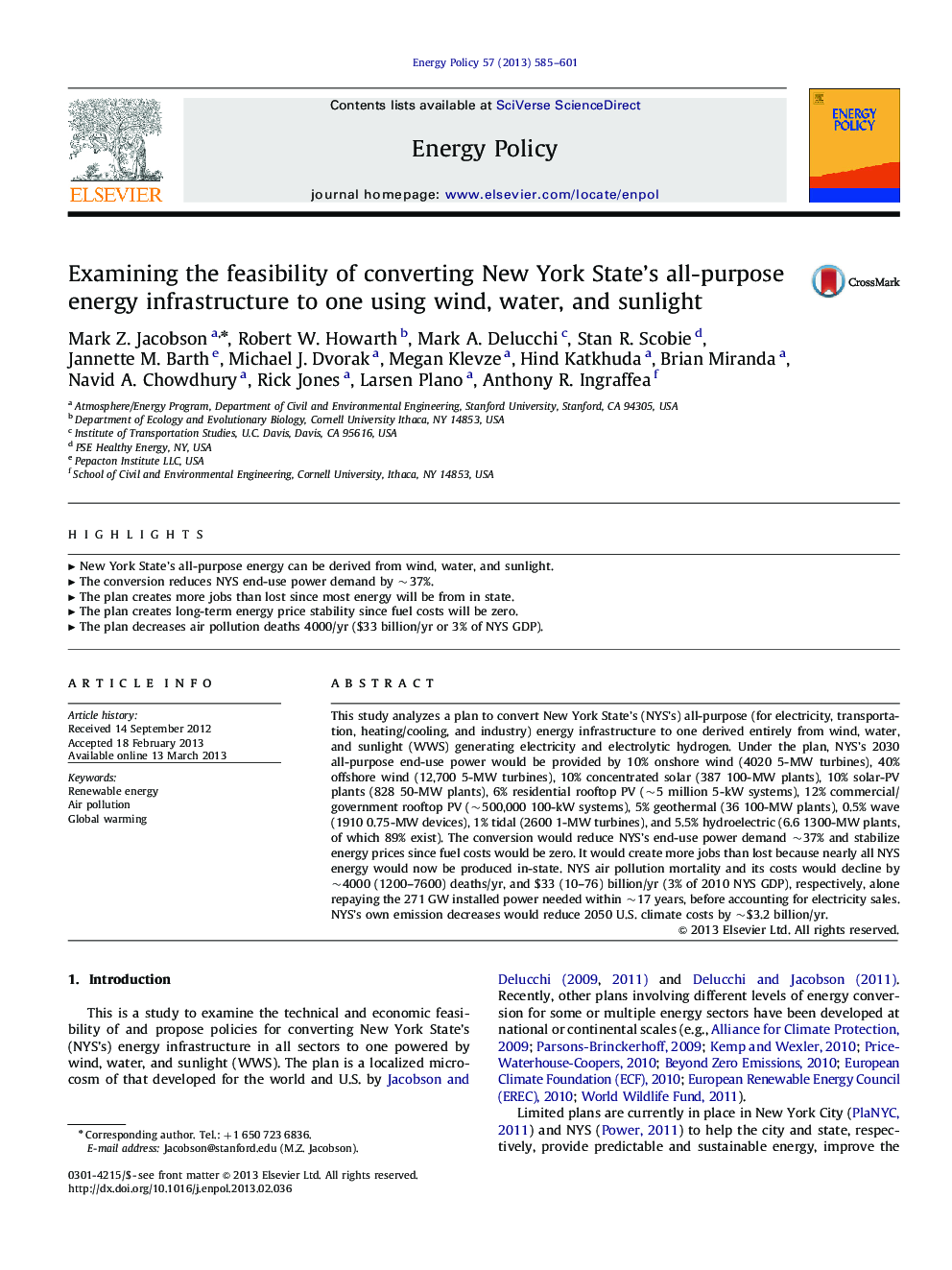| Article ID | Journal | Published Year | Pages | File Type |
|---|---|---|---|---|
| 993001 | Energy Policy | 2013 | 17 Pages |
This study analyzes a plan to convert New York State's (NYS's) all-purpose (for electricity, transportation, heating/cooling, and industry) energy infrastructure to one derived entirely from wind, water, and sunlight (WWS) generating electricity and electrolytic hydrogen. Under the plan, NYS's 2030 all-purpose end-use power would be provided by 10% onshore wind (4020 5-MW turbines), 40% offshore wind (12,700 5-MW turbines), 10% concentrated solar (387 100-MW plants), 10% solar-PV plants (828 50-MW plants), 6% residential rooftop PV (∼5 million 5-kW systems), 12% commercial/government rooftop PV (∼500,000 100-kW systems), 5% geothermal (36 100-MW plants), 0.5% wave (1910 0.75-MW devices), 1% tidal (2600 1-MW turbines), and 5.5% hydroelectric (6.6 1300-MW plants, of which 89% exist). The conversion would reduce NYS's end-use power demand ∼37% and stabilize energy prices since fuel costs would be zero. It would create more jobs than lost because nearly all NYS energy would now be produced in-state. NYS air pollution mortality and its costs would decline by ∼4000 (1200–7600) deaths/yr, and $33 (10–76) billion/yr (3% of 2010 NYS GDP), respectively, alone repaying the 271 GW installed power needed within ∼17 years, before accounting for electricity sales. NYS's own emission decreases would reduce 2050 U.S. climate costs by ∼$3.2 billion/yr.
► New York State's all-purpose energy can be derived from wind, water, and sunlight. ► The conversion reduces NYS end-use power demand by ∼37%. ► The plan creates more jobs than lost since most energy will be from in state. ► The plan creates long-term energy price stability since fuel costs will be zero. ► The plan decreases air pollution deaths 4000/yr ($33 billion/yr or 3% of NYS GDP).
